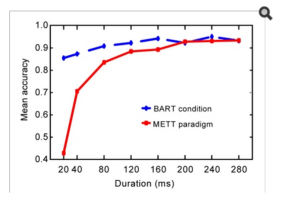How many of you have watched Lie to ME? That is an old TV show but a good one. Professor Lightman, which is the main character in the TV show, is excellent in finding out lies by people’s micro expression. I was fascinated by the TV show and I think what Professor Lightman does is so cool. No one can hide anything in front of him! I wonder if I can tell people’s emotions by their facial expressions, and if I can become an expert on this field.
Micro expression, as the name suggests, is a kind of small expression. “Small” in this context means last for a short time. Because this kind of expression lasts for very little time, it is hard for observers to pick out, and it is hard for people to hide this kind of expression.
The duration of the expression is the key to recognizing micro expressions. An experiment on the relationship between duration of the expression and recognition of the expression was done in Zhejiang University. In the experiment, eleven students with normal vision were chosen. They were asked to match expressions with different emotions including happiness, disgust, anger, fear, sadness and surprise. After they got all the expressions right, the actual experiment will start. One expression would be shown for 40, 120, 200 or 300 ms, and the participant was required to select one of the six emotional labels. Then the neutral expression would be shown for two seconds. Then another expression would be shown for 40, 120, 200, or 300 ms. This process will be repeated for all six emotions.
Graph is from the research above.
The red line is the result of the experiment, which is the METT paradigm. It probably going to get too complicated to explain the difference of BART and METT, so I just take the METT part of the experiment. METT means Microexpression Training Tool, in which a neutral expression will be shown between every expression with emotions.
The result shows that there is a strong correlation between the duration of an expression and the accuracy of recognizing the expression. As the duration gets longer, the accuracy gets higher. It seems that 200 ms is where the accuracy largely increases. It is a critical point as people can better recognize the expression that lasts over 200 ms. Because micro expression lasts from 20 to 300 seconds, so it seems that being about to recognize expression that lasts for over 200 ms is not enough for us.
Another graph showed that it is easy to confuse disgust with Anger, fear with surprise and fear with sadness. If people want to be an expert on finding out what people are thinking, they probably need to extra attention to those emotions.
What if I want to recognize expressions within a shorter time? It seems that training can help with that. Another twelve students are chosen and they were required to do a recognition practice. Then the same test as in experiment one was given to twelve of them, and the result shows an increase in the accuracy under the same time condition.
The study proves that people can recognize expressions within shorter duration if they are trained. The statistics also show that surprise is the easiest to recognize, and the second easiest emotion is happiness. It seems that if we pay really good attention and practice a little, it is not going to be too hard to tell what people are thinking by their micro expressions. Human seems to naturally have the ability of recognizing faces, and the duration of expression seems to be the biggest obstacle that stops us from “reading faces”. Practice shows incredible efficiency in improving people’s ability of recognizing lies.
The small sample size can be a problem in the experiment. However, Francis T. McAndrew also did a similar study and got similar result. By cross referencing the two studies, the result can be more reliable.
Professor Paul Ekman, the founder of the whole theory of reading micro expressions, also introduces an experiment in his journal, which proves that 40 minutes training is enough for people to become better in facial recognition.

Now that we have know the difficulties of recognizing micro expressions, and how to improve our ability in this field, we can start to work towards becoming an expert in reading faces. This ability can help us and help the society in a lot ways. If you can tell one of your friend is hiding his sadness, you can help him better. If you are good enough to tell who is trying to commit a crime, you will be a hero of the country.
If one day you actually become a expert, just remember to use your “superpower” wisely.
Works Cited
http://www.ncbi.nlm.nih.gov/pmc/articles/PMC3296074/#B26
http://jcc.sagepub.com/content/17/2/211







I have been interested in studying micro-expressions for about the past two years after watching an episode of “Brain Games” and then watching a video in psychology about how to differentiate true emotions from these extremely quick facial movements. One thing I found interesting in my research is that you can tell when people are actually smiling or laughing by if the skin around their eye wrinkles. Also, if you follow this link it will take you to a website that can help one distinguish one’s actual emotions by facial signals which many of the times can indicate correctly.